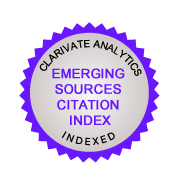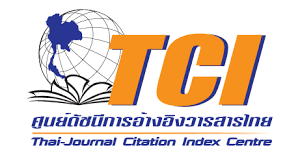Effect of temperature dropping during solution treatment in rejuvenation heat treatment on final microstructures of Udimet 520
Keywords:
Nickel base superalloy, Rejuvenation heat treatment, Udimet 520, Solution treatment, Microstructure, Gamma primeAbstract
Udimet 520 is a low precipitation hardened nickel-based superalloy, which is made to be turbine blades at high temperature. After long-term service, the microstructure of the turbine blades could be degraded, then the mechanical properties are worse than the new ones. The rejuvenation heat treatment of degraded turbine blades, which are made of cast Udimet 520, is following by solution treatment at 1,121ºC / 4 hours and then double aging processes, which include primary aging at 843 ºC / 24 hours and secondary aging at 760 ºC / 16 hours, respectively.However, in practical reheat treatment processes, the temperature during solution treatment can be dropped by error or malfunction of heating furnace because the furnace has to be operated at very high temperature for long time. Simulating this effect, the droppings of temperature during solution treatment are chosen and performed for 3 levels; 840 ºC, 800 ºC and 760 ºC, which could happen in practical working then heated up again immediately to solution temperature level. The maximum number of temperature dropping during the single solution treatment is up to 3 times. Received results show that the effect of temperature dropping during solution treatment has influenced on the final rejuvenated microstructures slightly due to the alloy is low precipitation behavior.Downloads
References
Kazempour-Liacy, H., Abouali, S. and M. AkbariGarakani. (2011). Failure analysis of a first stage gas turbine blade. Eng. Fail. Anal. 18(1) : 517-522.
Xu, S., Dickson, J. I. and Koul, A. K. (1998). Grain growth and carbide precipitation in superalloy, UDIMET 520. Metall. Mater. Trans. A. 29(11) : 2687-2695.
El-Bagoury, N., Waly, M. and Nofal, A. (2008). Effect of various heat treatment conditions on microstructure of cast polycrystalline IN738LC alloy. Mat. Sci. Eng. A. 487(1) : 152-161.
Hoseini, S. H., Nategh, S., and Ekrami, A. (2012). Microstructural evolution in damaged IN838LC alloy during various steps of rejuvenation heat treatment. J. Alloys Compd. 512 : 340-350.
Krongtong, V., Tuengsook, P., Homkrajai, W., Nisaratanaporn, E. and Wangyao, P. (2005). The effect of re-heat treatments on microstructural restoration in cast nickel superalloy turbine blade, GTD-111. Acta Metall. Slovaca. 11(2) : 171-182.
Turazi , A., De Oliveira, C.A.S., Enrique, C., Boho´rquez, N. and Comeli, F.W. (2015). Study of GTD-111 superalloy microstructural evolution during high-temperature aging and after rejuvenation treatments. Metallography, Microstructure and Analysis. 4(1) : 3-12.
Wangyao, P., Korath, T., Harnvirojkul, T., Krongtong, V. and Homkajai, W. (2005). The SEM study of microstructural restoration by re-heat treatments in cast superalloy turbine blade. Acta Metall. Slovaca. 11(1) : 25-35.
Wangyao, P., Krongtong, V., Tuengsook, P., Hormkrajai, W. and Panich, N. (2006). The relationship between reheat-treatment and hardness behavior of cast nickel superalloy, GTD-111. J. Metals. Mater. Miner. 16(1) : 55-62.
Wangyao, P., Homkrajai, W., Krongtong, V., Panich, N. and Lothongkum, G. (2007). Study of effect of HIP and heat treatments on microstructural restoration in cast nickel based superalloy IN-738. J. Metals. Mater. Miner. 17(2) : 51-56.
Wongnawapreechachai, P., Homkrajai, W., Lothongkum, G. and Wangyao, P. (2012). Effect of temperature dropping during reheat treatments on GTD-111 microstructure. High Temp. Mater. Processes. 31(2) : 113-123.
Promboopha, A., Polsilapa, S. and Wangyao, P. (2015). Effect of temperature dropping during solution treatment during rejuvenation heat treatment on final microstructures in cast nickel base superalloy, grade Inconel-738. J. Metals. Mater. Miner. 25(1) : 69-75.
Downloads
Published
How to Cite
Issue
Section
License
Copyright (c) 2016 Journal of Metals, Materials and Minerals

This work is licensed under a Creative Commons Attribution-NonCommercial-NoDerivatives 4.0 International License.
Authors who publish in this journal agree to the following terms:
- Authors retain copyright and grant the journal right of first publication with the work simultaneously licensed under a Creative Commons Attribution License that allows others to share the work with an acknowledgment of the work's authorship and initial publication in this journal.
- Authors are able to enter into separate, additional contractual arrangements for the non-exclusive distribution of the journal's published version of the work (e.g., post it to an institutional repository or publish it in a book), with an acknowledgment of its initial publication in this journal.








